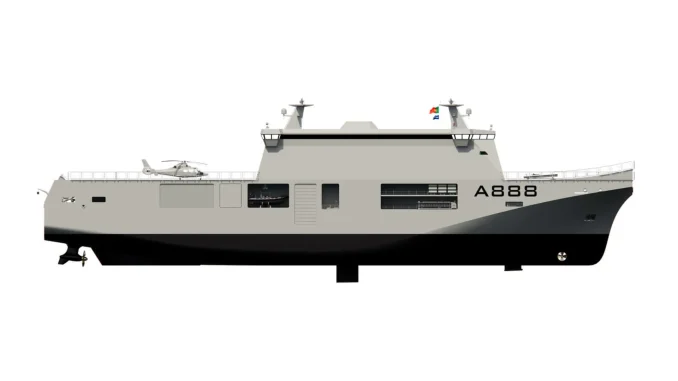
SHAH ALAM: The Portuguese Navy has contracted Damen Shipyards Group for the design, construction and outfitting of a multi-purpose vessel (MPV), it was announced on November 24. The MPV is a helicopter landing ship (LHD) but it is not amphibious assault ship as it does not have a well deck.
According to Damen, the ship will be 107 metre long though it does not reveal the tonnage of the ship. Damen smallest Enforcer landing platform dock, marketed now, is about 120 metres long, has a tonnage of 9,000 tonnes. Apart from this, we also do not know the cost of the ship.
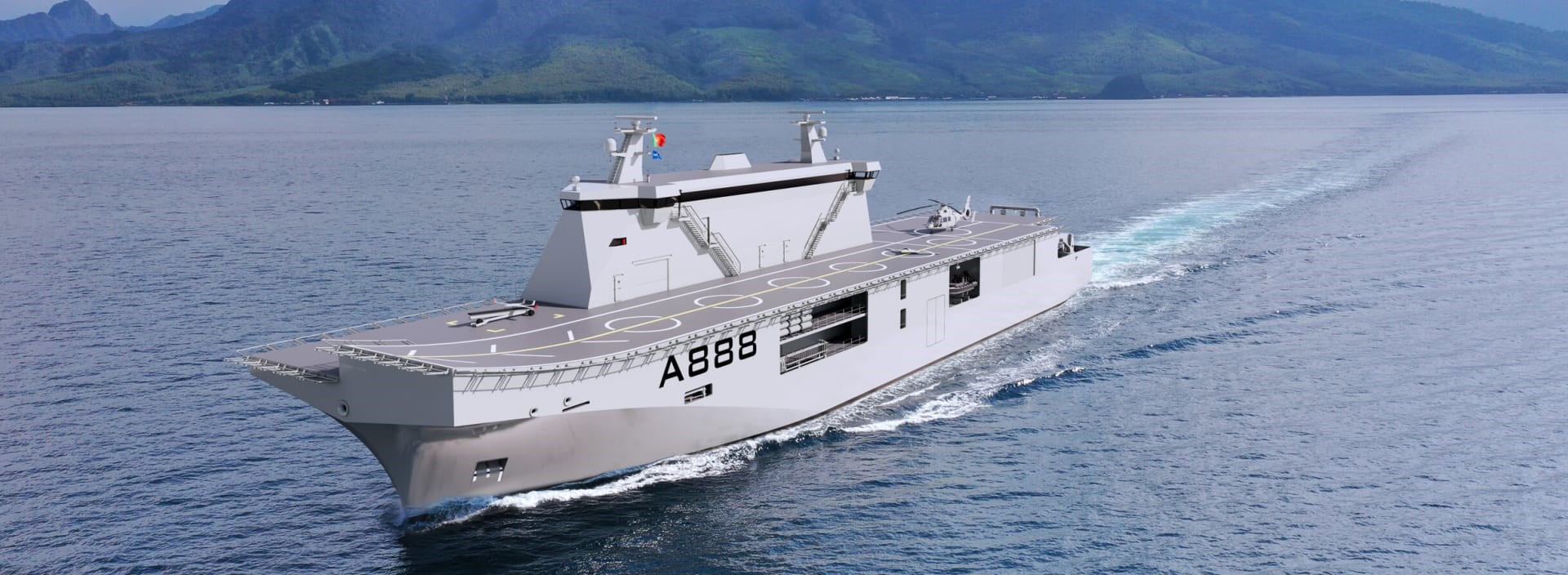
The MPV is interesting design for the RMN own MRSS requirements, as it is not equipped with a well deck. An MRSS without a well deck will be cheaper to operate and maintain, I believed. Of course, we also do not need the helicopter deck style of the MPV.
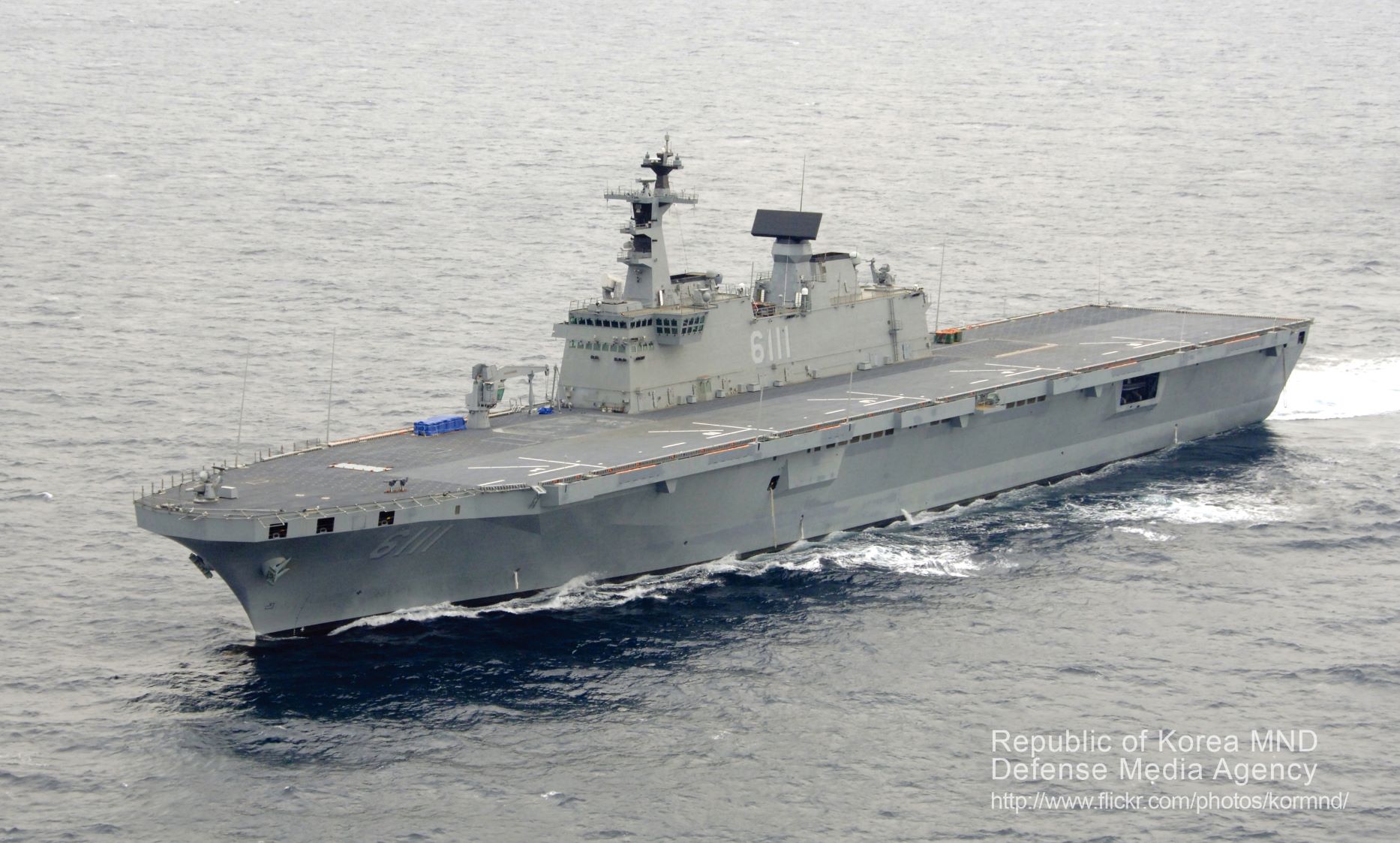
That said, in early 2000 or so, the South Korean proposed that RMN procured the Dokdo class LPH which was over the top of course. There was also proposal for the RMN to get a Mistral class LPH or even mini version of the LPH (the design was never revealed though). Both class of LPH are also equipped with a well deck.
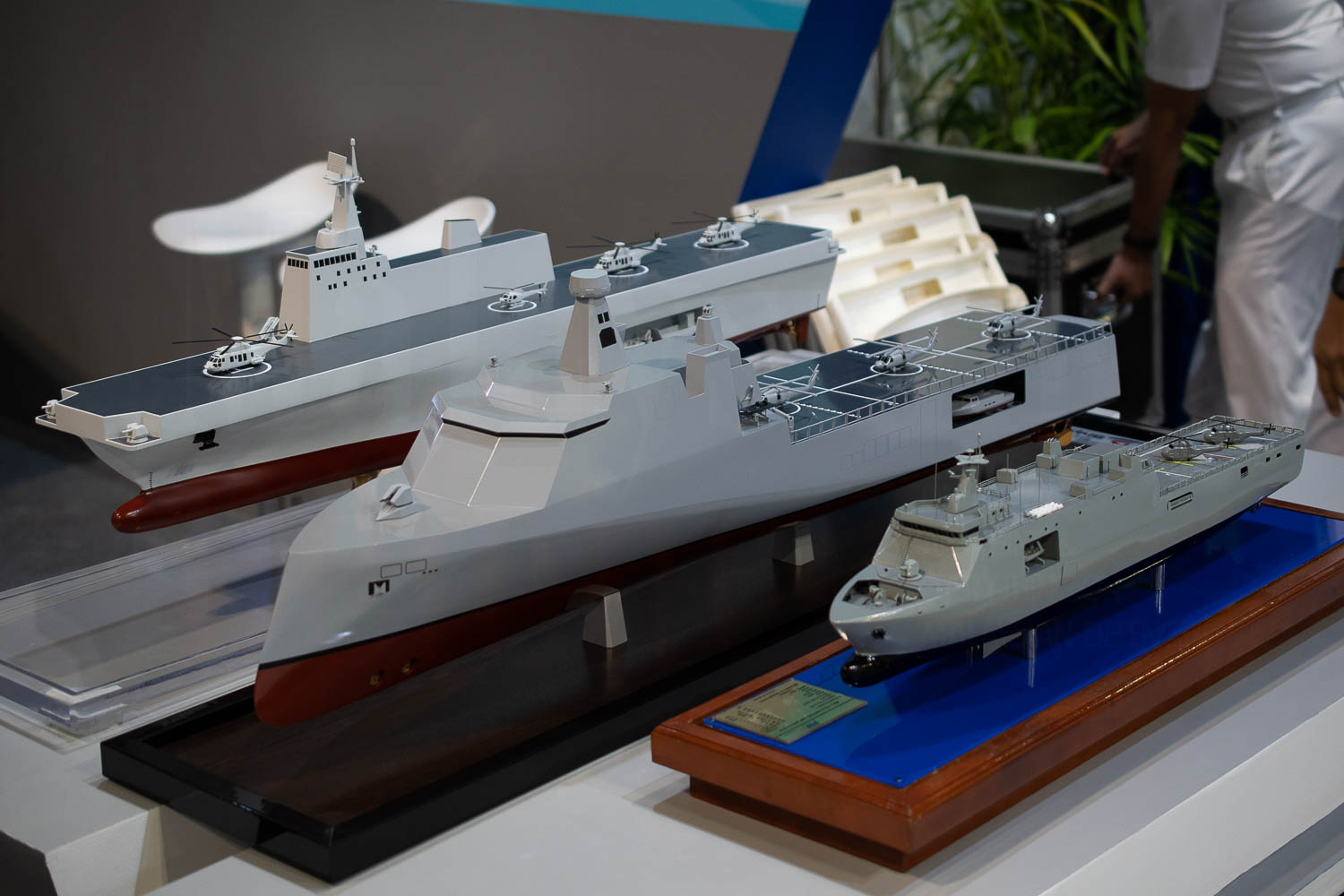
The release from Damen:
Portuguese Navy signs contract with Damen Shipyards for innovative Multi-Purpose Vessel
The Portuguese Navy has contracted Damen Shipyards Group for the design, construction and outfitting of a state-of-the-art Multi-Purpose Vessel. The contract was signed by Director of Ships Rear Admiral Jorge Pires and Damen Shipyards Group CCO Jan Wim Dekker. The project follows a European tender process and is funded by the European Union’s Recovery and Resilience Facility (RRF) that is part of Next Generation EU (the economic recovery package to support EU member states affected by the COVID-19 pandemic).Damen has developed this 107-metre long Multi-Purpose Vessel based on the specific requirements of the Portuguese Navy. The resulting design is truly a multi-purpose platform, with primary mission roles including oceanic research, search and rescue, and emergency relief in addition to maritime safety and naval support operations. To this end, the vessel will be capable of deploying unmanned drones and helicopters.
For the oceanic research and monitoring scope of operations, the vessel will be equipped with laboratories and accommodation for scientific staff. For the naval support aspect, the Damen-built vessel will have numerous design features to enable such operations. This will comprise a stern ramp for UUVs and USVs (Unmanned Underwater Vehicles and Unmanned Surface Vehicles) as well as a 94×11-metre flight deck and hangars for UAVs (Unmanned Aerial Vehicles).
The new vessel will be classified by the Portuguese Navy as a Multifunctional Naval Platform (PNM). To fully match this vessel designation, Damen has collaborated closely with the Portuguese Navy to incorporate future-versatility into the design. This consists of a 650m2 cargo deck and space for twelve 20-foot containers. Modular systems such as containerised hospital facilities, hyperbaric chambers, or ROV equipment can therefore be installed as required.
“We are proud to have been selected to build this spectacular vessel for the Portuguese Navy,” Damen Shipyards Group CEO Arnout Damen said after the contract signing ceremony. “We are convinced that this vessel will represent a major milestone in the naval sector. It is the first of its kind, with the highest capabilities to create awareness, deploy and manage all types of drones. This vessel’s multi-purpose functionality will enable the Portuguese Navy to develop the most demanding missions and at the same time the ability to perform research activities in the deepest areas of the ocean. It also underlines Damen’s firm relationship with the Portuguese Navy and shows a further example of European defence industry cooperation.”
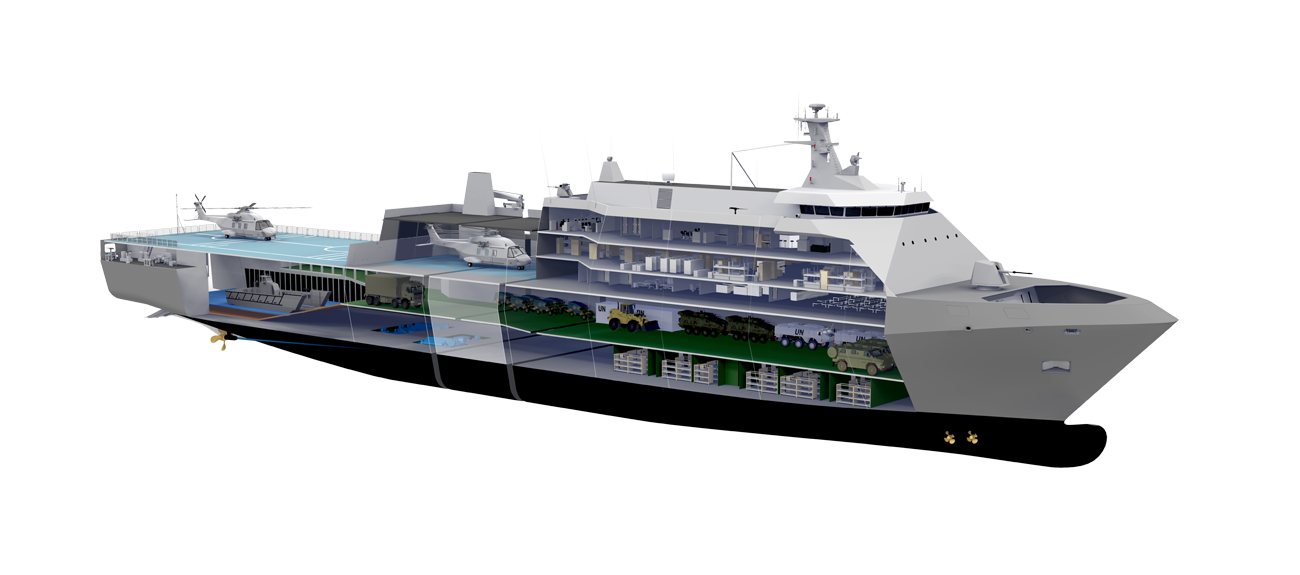
It must be noted that the RMN MRSS requirements in recent times must have included a well deck as the ships that had been proposed for it – including a version of the Damen Enforcer and the PT PAL ones – are all equipped with them.
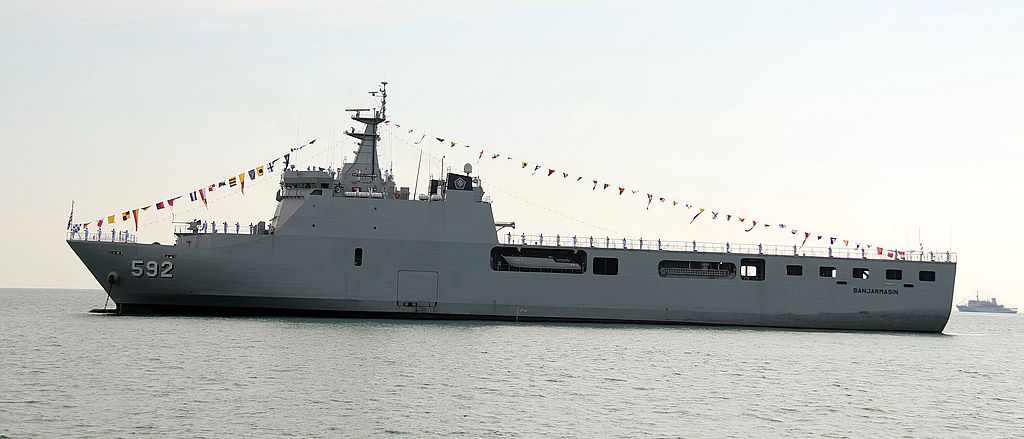
If we get the money, we could get Damen to modify the MPV with the Enforcer style superstructure, again without a well deck.
— Malaysian Defence
If you like this post, buy me an espresso. Paypal Payment

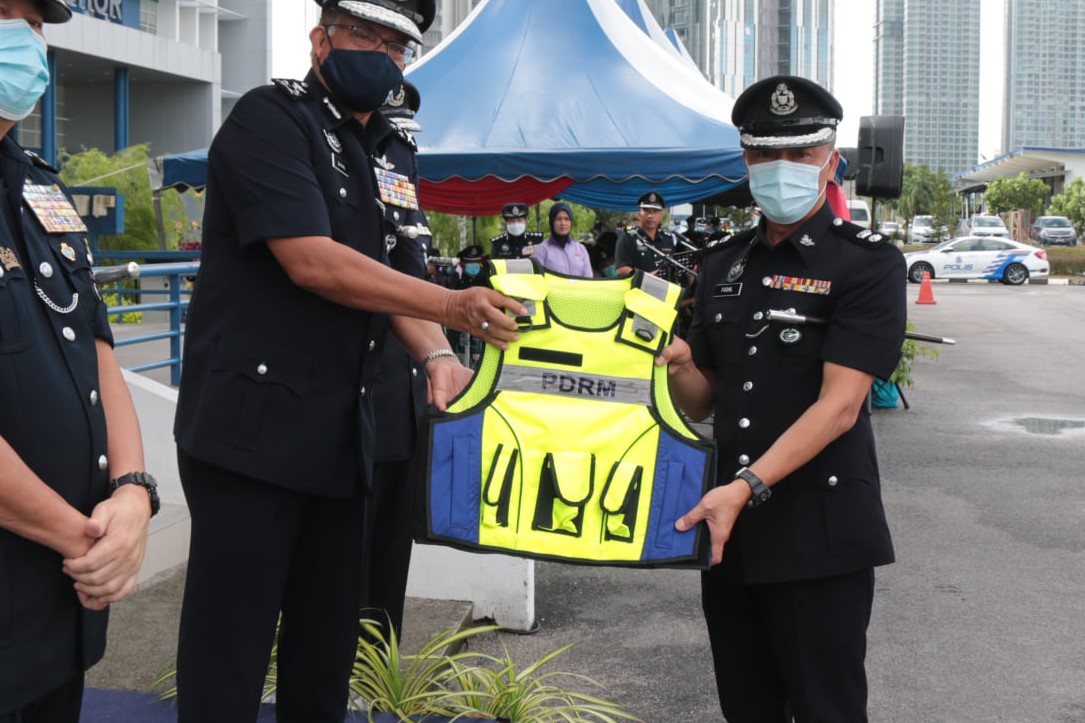
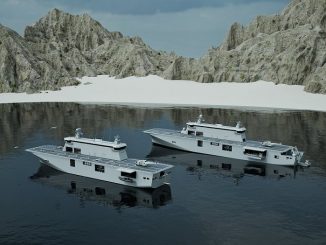
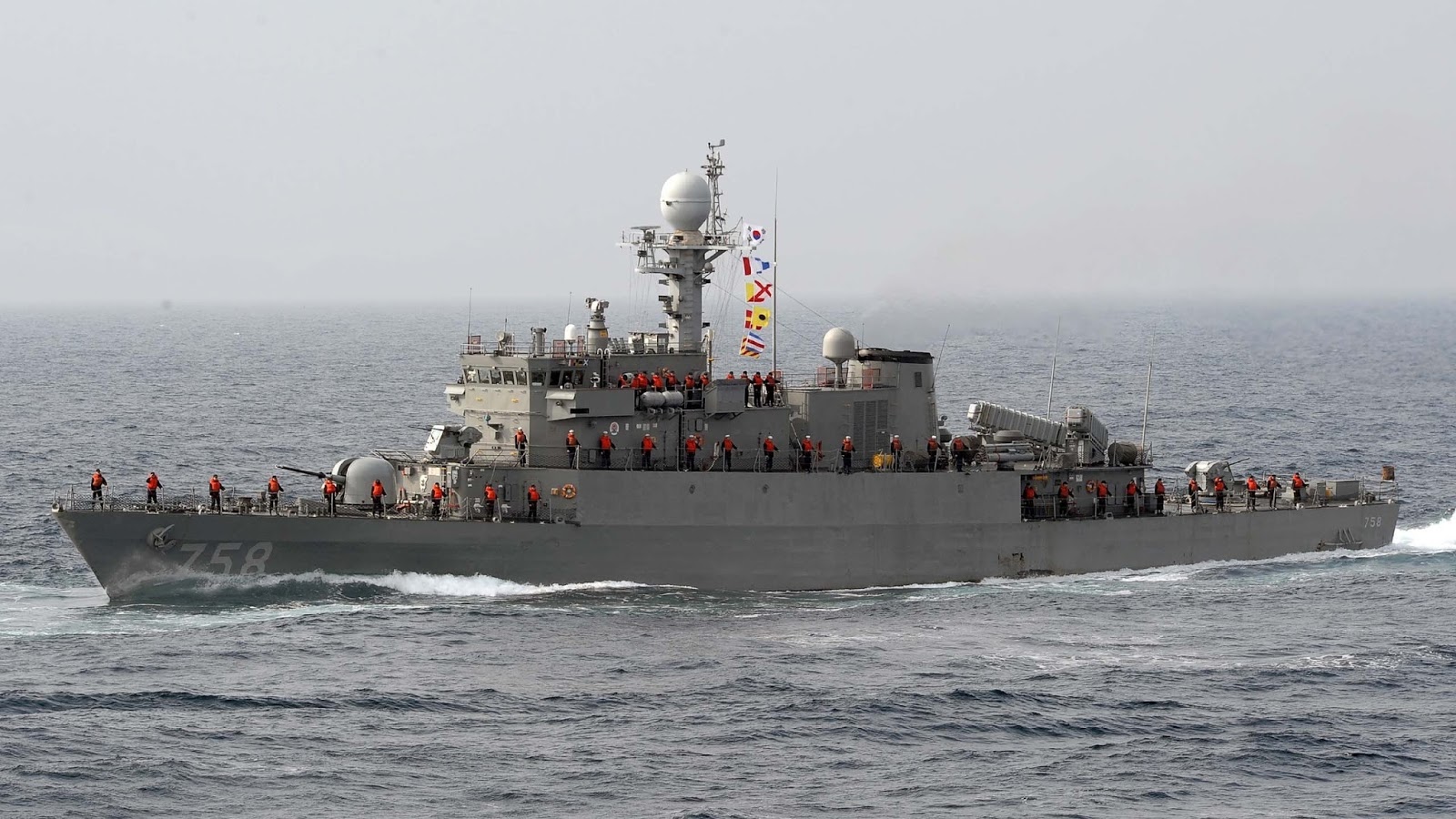
What is it actually? The Portuguese navy will mainly use it as a drone mothership/carrier. To support UAS, USV & UUV deployment. Secondary task HADR and oceanographic research. It has no welldeck but has a small steel beach at the stern of the ship.
Cost? 132 million Euro.
Crew? 48 + 42 drone operators/scientists
To be built in either in poland, romania, turkey or Indonesia
Basically a Portuguese mini-LHA. But as part of NATO, I guess the amphib duty is handled by another country or something.
“again without a well deck.”
IMHO the MRSS should come equipped with a well deck, otherwise its no different than the current MPSS and in that case why not get more of them. Yes we dont need a through deck design (aka carrier style) but a well deck is useful for HADR operations as been proven by disaster after disaster again.
The propeller is electric?
Its like two pod propellers which is usually driven by generators which got their power from diesel engines and probably a single turbine engine as well. So yes it is likely diesel electric driven
The Turks have some similar looking designs from TAIS. At only 107m these small ships might be perfect for the TLDM.
Nah..Still long way to go..need to focus on finishing the Lcs and starting LMS B2..We dont need LHA,LHD type ship..we only need a more traditional looking lpd type that have large well/dry deck to transport vehicles like tanks,lorry,armour and maybe need just 2 to 3 heli deck with aviation hangar ofcourse
Without well deck there’s no way of storing helicopters or UAVs beyond the portable/hand launched ones, exposing them to the elements (granted we’re not going to be use this ship to go fighting across the globe but still). If RMN is looking for flat top LHD at least one well deck is necessary.
Great thing about flat top LHD is that we can operate larger TUAVs without resorting to awkward launching system like the ones used by Fulmars. I guess the reason why there’s so many crashed Fulmars is due to small landing area, couple with moving ships made landing a non rotary winged UAV especially difficult.
The well deck got nothing to do with storing things underneath the main deck. A well deck purpose is to launch landing craft and boats from inside it. The helicopters could be stored in the hangar which is available on most LHD or LPD. As I said in the post, we could modify the MRV to have the superstructure of the Enforcer which has a hangar on the main deck and also a bigger hangar below deck.
Ah my bad..i mean hangar below deck..not the well deck..for amphibious operations
A carrier mimicking flattop design will attract a lot of controversies and wild accusations (like are we standing up an aircraft carrier force or the likes).
Same recriminations where we were linked to the Mistral boats back then.
Such a design in the JMSDF (Kaga) had also attracted a lot flak & so as SG proposed MRCV. Firdaus is right, rather we only need a more conventional LPD layout (superstructure in the middle) with a well deck for landing crafts & amphib capable IFVS.
What accusations and controversies? As long it is completed on budget and time. My proposal is to use the hull – as it deletes the well deck – but with a normal LPD bridge and a hangar so it will not look like anything like a helicopter carrier. It is not like we are building a 70,000 tonnes supercarrier.
Without the well deck, it will be easier to maintain her compared to a LPD with a well deck which needs continuous maintenance. From the CGI, she could also carry small landing craft but using cranes to lower and pull them out of water, for when it is necessary to conduct amphibious operations but without the penalty of a well deck.
There are 3 design types using US Navy as a reference. LHA, LHD, and LPD. LHA and LHD are helicopter carriers, the former without well deck for more aviation space, the latter with a well deck but less aviation space. The difference between LHA, LHD and LPD is the intended use. If you want to do assault missions, you get a LHA or LHD because of the space for aviation assets (modern doctrine, less on beach assaults, more on air assaults). If your intended use is movement of troops and equipment, LPD is sufficient. References for LHA is the Flight 0 America class and the Portuguese MPV, for LHD is the Flight 1 America class, Dokdo, Mistral and RSN’s future JMSS (based on illustrations). LPD references are Indonesia’s Makassar class, RSN’s Endurance class, and USN San Antonio class. Personally, LPD like the Makassar class seems like a sensible choice (although LHA/LHD type has better longevity). I wonder if a Makassar without well deck is possible.
Yes there is a Makassar class without a well deck, which are the two hospital ships. But they have taken out most of the hangar space to fit the medical facilities.
Joe,
Why would a 107m flat top scare anyone?? It’s even shorter than the LCS. The only fixed wing aircraft that can operate from it will be the fleet of 18 1:35 scale Tamiya F-35Bs that the RMN will be buying soon.
“What accusations and controversies?”
Did you notice whats on social media when the Mistral proposal was flying around?
“Without the well deck, it will be easier to maintain”
Yes it will, but what operational advantage it brings as compared to our current MPSS? If want something similar just slightly enlarge the MPSS design and be done with it.
If want more operational flexibility, MRSS needs to bring something else to the table and that is a well deck for amphib operations where we lost that capability after the loss of Inderapura.
And if were considering on our neighbour’s design, Indo Makassar, then why not also SG Endurance? A cut down to 110mtr with reduce volume space but keeping its functionality (helipad & well dock) intact. Plus it has a conventional LPD superstructure layout which wont court any controversies.
We never use the amphib capability of the Inderapura, we used it similar to the Indera Sakti. We would have welded up the beaching capability of the Inderapura if we had the money to do it just like what Oz did to their ships. We have survived 40 years without the need for amphib capability so why is it so important to have now?
Again have you even read my proposal? I said we just use the hull but the superstructure will be a LHD design.
Again what controversies? If it was just on social media it was nothing because there was no serious proposal. How big the controversy can it be when the proposal was not serious.
@Tom Tom
Its the look, not the size. The JMSDF Kaga was no bigger than the WW2 Kaga but it created an international outrage from multiple nations just because how it looks, not the size of it.
“How big the controversy can it be when the proposal was not serious.”
When the proposal was not serious, the noise is low. What happens when it becomes serious, like were going to get it kinda serious?
“so why is it so important to have now?”
In the past, we were looking inwards and no need to support our Asean neighbours. The 2004 Indian Ocean tsunami had opened our eyes & hearts that disasters are no longer isolated or limited and we have to help each other, thus HADR teams are formed/stepped up and contacts with each other established for multinational response. The 2011 Tohoku tsunami further reinforces that disasters can be far reaching and surrounding infra can be so totally destroyed there are no other quick ways to reach with rescue vehicles. Whatmore in the past our natural disasters are not as devastating and very rare to happen but these days with climate change, whole states can be inundated with water, the last big flood had isolated quite a number of coastal towns even.
I believe the latest MRSS requirements have considered such factors and thus such a need for more operational flexibility.
By the way, there is an old posting from 2017 where PT PAL proposed 2 enlarged Makassar class designs without a well deck – presumably based on RMN’s specifications. I think the decision today is a fairly straight forward, what is the most cost-effective way to replace the 40+ years Indera Saktis’. LH’s are nice but will be paying premium for a ship without the helicopters to be tasked to the ship. A well deck is also nice but will add to the cost.
Joe,
You don’t get the point:
1. Malaysia is not Japan.
2. The current Kaga is 248m long.
Seriously? You are comparing apples with oranges. 107m is not in the same league as 248m.
It must be noted that KD Indera Sakti is 100 meters long. I could be wrong but it is likely that the new MRSS will be in the same size of the Indera Sakti. Yes, I know, shipyards has offered MRSS around that size.
Most importantly is what TLDM wanted. And if its a well deck they want today, then…
Its Army not RMN. RMN wont use the well deck nor use the helicopter carrier. The purpose of the well deck and the helicopter carrier is to launch assault missions. Only Army does that. RMN wont use its budget to buy nice to haves that the Army wont use. The LPD is the better design for RMN where the purpose is to move equipment and resupply ships on the go. We really need to see 4nextG I feel. If Army will not be spending for ampbib assault or air assault, no point RMN use their own money to get a helicopter carrier or well deck.
@ marhalim
The old requirement for MRSS las a length of more than that, due to the want for helicopter landing and storage space. Latest HARSARD from parliament regarding the MRSS no longer mentions this and amphibious requirements. New MRSS requirement just listed 2 needs –
1) logistical strategic sealift between east and west malaysia
2) HADR
HADR can be done by ships other than a LPD
For example, Australian military now has a dedicated HADR ship for the Pacific named ADV Reliant
http://www.samoagovt.ws/2022/12/media-release-australias-pacific-support-vessel-adv-reliant-to-visit-samoa/
It is a used ex oil and gas OSV.
Currently Australia has 3 such OSVs in their fleet
– ADV Reliant
– ADV Ocean Protector
– ADV Ocean Shield
My plan for TLDM to have 3x such OSVs to operate as a MCM mothership, SF support, Submarine support/tender, UAS/USV/UUV support, pipeline security and surveillance, floating base (with the use of dynamic positioning system DPS), maritime surveillance/patrol and HADR missions.
@ kel
The Army 4Next G has nothing on amphibious anything, but there is an explicit requirement of 2x PUTD Brigades.
Well, then it’s obvious why a well deck and a helicopter carrier isn’t worth paying extra for – no one will use it. Unless the Indonesia and Philippines Navy have nothing good to say about the Makassar class, that LPD design seems like a sensible choice. Supports further effort on improving regional interoperability. Philippines paid around USD72 million in 2013 for their 2 ships. Assuming 25% price increase and a 10% Malaysia “tax”, approximately USD100 million for 2 enlarged versions – RM470m for 2 new MRSS.
@hulubalang
“My plan for TLDM to have 3x such OSVs”
If you meant RMN specifically need that type of Australian ships then it’s more difficult for them to load something on the helicopter plus it dont have a helicopter hangar
@ luqman
“If you meant RMN specifically need that type of Australian ships then it’s more difficult for them to load something on the helicopter plus it dont have a helicopter hangar”
please look at the proposed mission profile for OSV…
– MCM mothership,
– SF support
– Submarine support/tender
– UAS/USV/UUV support
– pipeline security and surveillance
– floating base (with the use of dynamic positioning system DPS)
– maritime surveillance/patrol
– HADR missions
OSV does have a helipad. Does any of the above mission absolutely needs a helicopter hangar?
These are OSVs and OSV-based ships that is operated by major navies
Royal Navy has
– RFA Proteus
https://pbs.twimg.com/media/F_T7fycWQAAe0Ue.jpg
mission : Critical seabed infrastructure protection/underwater surveillance/seabed warfare
– RFA Stirling Castle
mission : Mine Counter Measure mothership
Australian Defence Force
– ADV Reliant
mission: dedicated pacific ocean HADR platform. ocean patrol of friendly countries EEZ.
– ADV Ocean Protector
mission: auxillary naval ship, ocean patrol, HADR.
– ADV Ocean Shield
mission: OPV
Royal New Zealand Navy
– HMNZS Manawanui
mission: multi-role offshore support vessel, dive support, hydrographic survey vessel
French navy
– D’Entrecasteaux-class multi mission ship (4 ships in total)
mission: OPV, sovereignty, law enforcement and logistics missions (such as policing illegal fishing, offshore traffic and resource mining, assisting distressed ships, search and rescue, and contributing to the logistics of French overseas territories)
– Loire-class BSAM Offshore Support & Assistance Vessel (4 ships in total)
mission:
1) the support of the forces (towing of large displacement vessels, escort and support of submarines, training of the forces, …)
2) the maritime safeguard ( rescue at sea, assistance to ships in distress, fight against maritime pollution, etc.)
3) regional support (towing, anchoring and maintenance of mooring boxes, lifting of wrecks …)